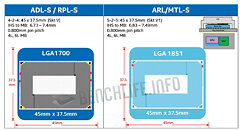
The US CHIPS Act: Why Intel Supports It
As the world comes to grips with chip shortages due to supply chain disruptions and ripple-effects from the global pandemic, Intel's leaders are urging Congress to fund the CHIPS for America Act to create a more stable future for the U.S. tech industry.
In 1990, 80% of the world's semiconductors were produced in the U.S. and Europe. Today, 80% are produced in Asia, where countries provide substantial incentives to domestic semiconductor industries. This helps create a 30% to 50% cost disadvantage for companies that produce semiconductors in the U.S.
Increasing manufacturing in both the U.S. and the European Union is key to helping rebalance the global supply of chips. In February, EU President Ursula von der Leyen announced the European Chips Act, with the goal of doubling the EU's global semiconductor manufacturing share to 20% by 2030. It also provides for more R&D investments in disruptive technologies, supports small business and startups by attracting new talent to Europe for them, and focuses on building partnerships with like-minded countries to strengthen interdependencies.
In 1990, 80% of the world's semiconductors were produced in the U.S. and Europe. Today, 80% are produced in Asia, where countries provide substantial incentives to domestic semiconductor industries. This helps create a 30% to 50% cost disadvantage for companies that produce semiconductors in the U.S.
Increasing manufacturing in both the U.S. and the European Union is key to helping rebalance the global supply of chips. In February, EU President Ursula von der Leyen announced the European Chips Act, with the goal of doubling the EU's global semiconductor manufacturing share to 20% by 2030. It also provides for more R&D investments in disruptive technologies, supports small business and startups by attracting new talent to Europe for them, and focuses on building partnerships with like-minded countries to strengthen interdependencies.






























































